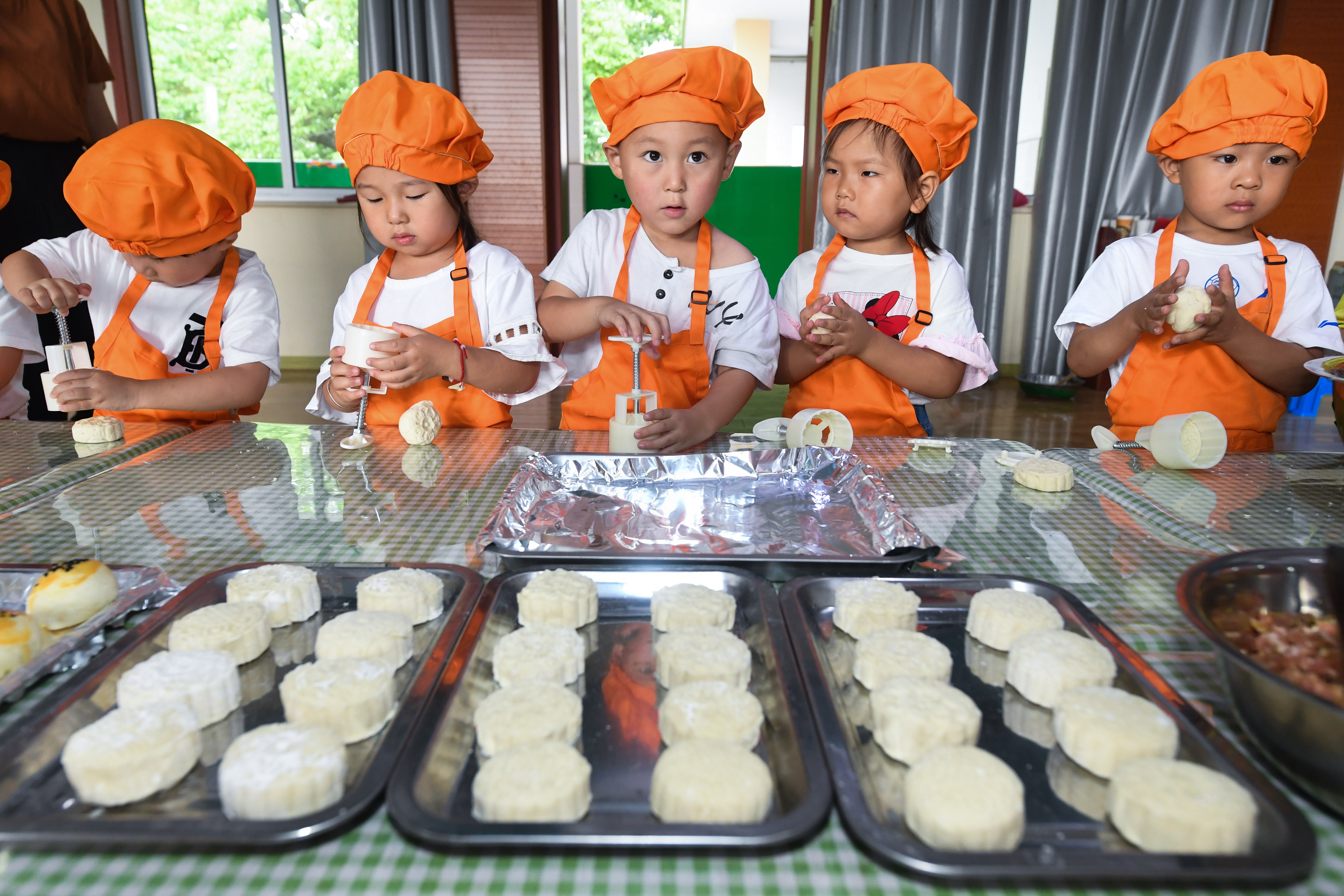Mid-Autumn Day: A time for family and mooncakes
- By Rachana Gupta
 0 Comment(s)
0 Comment(s) Print
Print E-mail China.org.cn, September 13, 2019
E-mail China.org.cn, September 13, 2019

September 13 marks the Mid-Autumn Day, which is also commonly known as the mooncake festival. The festival is quite popular in China and is celebrated on the 15th day of the 8th lunar month with fun and fervor. Similar to other Chinese celebrations, Mid-Autumn day also has many legends associated with it. Some of the folk-tales include the story of Jade Rabbit and woodsman Wu Gang cutting the cherry bay tree.
The most famous of all legends, however, is the one of Hou Yi and his pretty wife Chang E. As per the tale, once 10 suns rose together in the sky, and as a result of their blistering heat, all the crops died. This led to poverty and starvation of the peasants. Looking at the distressed state of his people, Hou Yi, displaying extraordinary courage, climbed to the top of the Unlucky Mountain and killed nine suns with his strong bow. After the last sun begged for his mercy, Hou Yi ordered it to rise and set as per nature's rule. This incident made Hou Yi a hero in the eyes of the people, and they started praising him everywhere. Many of them became his disciples to acquire combat skills from him.
Once, on his way to the summit of the Unlucky Mountain, Hou Yi met the Empress of Heaven Wang Mu. The empress provided Hou Yi with an elixir, which could transform a mortal into an immortal once consumed, thus making the person a part of the sky. Wang Mu offered Hou Yi to drink the elixir, but he had a beautiful wife named Chang E, whom he loved profoundly. Scared that drinking the elixir might separate him from his wife, he refused to sip it, instead giving it to Chang E for safe-keeping. Hou Yi also had a disciple named Peng Meng, who accidentally came to know about the elixir. He thought about stealing the elixir and one day, while Hou Yi was away, he sneaked into Chang E's room. Chang E, however, upon sensing Peng Meng's ill-intentions, drank the elixir herself and immediately flew into the sky. Miserable Hou Yi tried every possible way to reach to his wife but repeatedly failed.
Exhausted, at last, he brought all of Chang E's favorite fruits and incense sticks and waited under the moon in the memory of his loving wife. The peasants followed their hero and started performing this ceremony, which eventually took the form of a festival.
Notably, the festival traces its origin to the Shang Dynasty (1600 B.C.-1046 B.C.). During this period, Chinese people started celebrating the harvesting season, especially around the Autumn full moon. The festival, however, only became famous in the early Tang Dynasty (618-907).
Besides offering fruits and incense to the full moon, there are also other traditions associated with this festival. One of them is to eat mooncakes, which are traditional Chinese pastries made with wheat flour and sweet stuffing like sugar and lotus seed powder.

Generally, mooncakes are cut into equal portions for all the members of the family. The cake is considered a symbol of the family reunion and is deemed to be auspicious to eat during the Mid-Autumn day. In the past, it was baked at home. However, with the changing times, people started buying mooncakes from the market. Mooncakes, although similar in appearance, have distinct flavors. For instance, cakes from Beijing and Tianjin have more oil in comparison to Cantonese ones, which contain more sugar. Cakes from Jiangsu are both more oily and sweeter and have a soft, crispy flavor, while Chaoshan-style cakes have a white, flaky crust with rich, tender filling.
During the Mid-Autumn day, families also decorate their homes with beautiful lanterns of different shapes and colors. The lanterns can be seen in many public places as well, such as streets and gardens, creating a beautiful view at night.
Additionally, most people spend their time cooking and eating lunch and dinner together, while in the evening, they go out to pray to the full moon for their family's prosperity and well-being. There's also a tradition of giving red envelopes (real or virtual) to young ones in the family as a blessing for their bright and prosperous life.
While most people celebrate the festival with their families and friends, some also prefer to celebrate it by traveling to take a break from their otherwise mundane and stressful lives and to get rejuvenated.
Except for China, Mid-Autumn festival is also celebrated in countries such as Vietnam, Singapore, Malaysia, Indonesia, Philippines, Korea, Japan, and Cambodia.
The way of enjoying the Mid-Autumn day may vary from person to person and region to region but the joy and happiness brought by the full moon are similar everywhere. The festival not only brings an opportunity for families and friends to come together, but also brings genuine pleasure and a feeling of contentment for everyone.
Rachana Gupta is an active blogger, poet and freenlance content writer. She is also the author of the book "To The Horizon We Indeed Sail".
Opinion articles reflect the views of their authors only, not necessarily those of China.org.cn.
If you would like to contribute, please contact us at opinion@china.org.cn.






Go to Forum >>0 Comment(s)